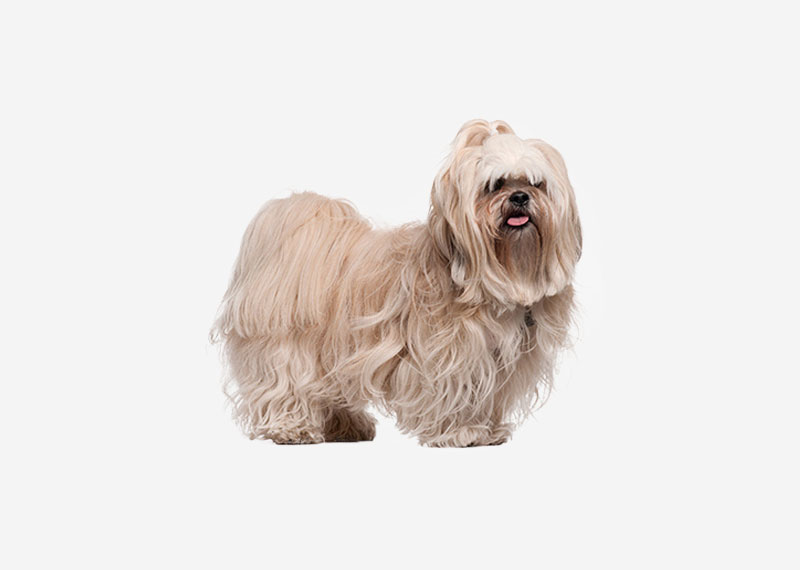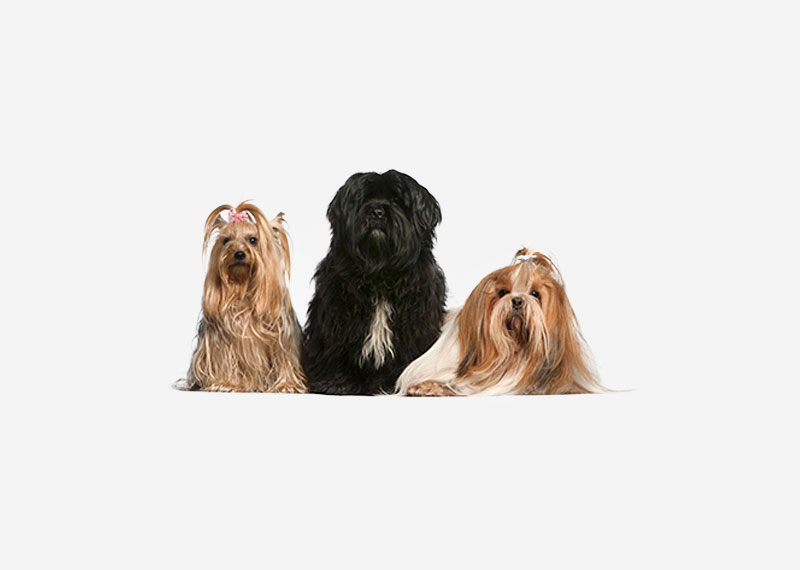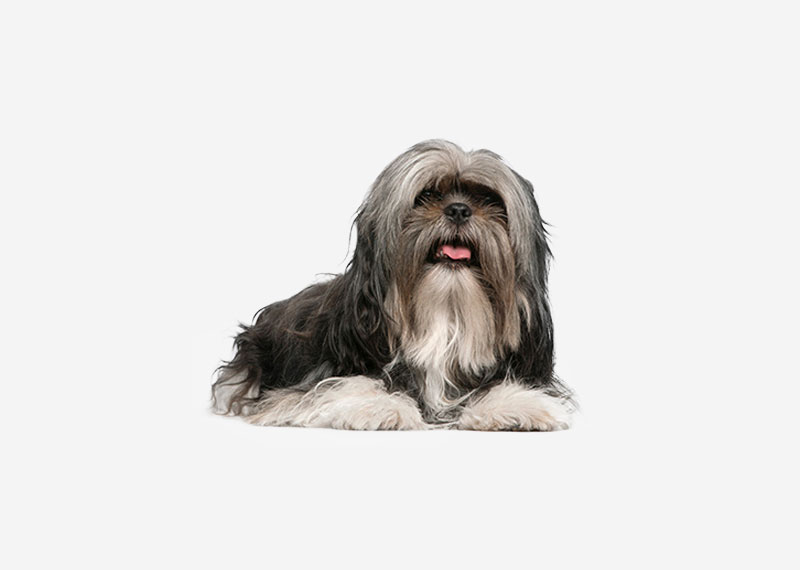Super User
Lagotto Romagnolo
The Lagotto Romagnolo is a breed of dog that comes from the Romagna sub-region of Italy. The name means "lake dog from Romagna" coming from the Italian word lago, lake. Its traditional function is a gundog, specifically a water retriever. However, it is often used to hunt for truffles.
History
The Lagotto is an ancient breed of water retriever from the lowlands of Comacchio and marshlands of Ravenna, Italy. All modern water retrieving dog breeds are believed to have descended in part from the Lagotto Ramagnolo. Andrea Mantegna in the 1474 work titled "The Meeting" depicts a small dog in the lower left corner that is the perfect image of today's Lagotto.
Health
Lagotto live roughly 16 years. Some health issues are, but only with poor breeding:
- Hip dysplasia choose your Breeder- this is only a condition of poor breeding, be sure your Breeder has GD Hip Lineage.
- Benign Juvenile Epilepsy Choose your Breeder - be sure your Breeder, breeds JE clear.
- Cerebral Anomaly. (Could be the same as BJE above) Good Breeders breed clear.
Lagotto puppies have been crucial in research into epilepsy. In July 2011, researchers in Finland reported the discovery of a mutation in a gene called Lgi2 that may be a new candidate gene for human benign childhood epilepsy. Lgi2 is the first gene that can be linked directly to the remission that sufferers experience after the age of ten. Lagotto breeders are now using a genetic test to screen for this mutation.
Through thousands of years of adaptation and survival in the Romagnolo Mountains of Italy, the Lagotto Romagnolo Breed of Dog has survived by eliminating health issues by natural selection. The onus is now on Breeders to ensure this pure ancient breed retains these naturally surviving good health standards. Globally, Lagotto Romagnolo has begun its revival as a pure, ancient, gentle, non-shedding waterdog.
Lakeland Terrier
The Lakeland Terrier is a dog breed, which takes its name from its home of origin, and is mostly hypo-allergenic (non shedding).
Lancashire Heeler
The Lancashire Heeler is a small breed of dog developed for use as a drover and herder of cattle. The Lancashire Heeler is listed by the Kennel Club (UK) as a vulnerable breed.
Landseer
The Landseer is a dog breed. Many kennel clubs consider the Landseer to be simply a black-and-white variant of the Newfoundland, but the Fédération Cynologique Internationale recognizes it as a separate breed. This separate breed is called Landseer European Continental Type (E.C.T.).
The breed was named after the British painter Sir Edwin Henry Landseer, because in 1838 he created the painting A Distinguished Member of the Humane Society, which shows a dog of this breed.
History
Because of their good swimming skills these dogs were utilized by fishermen to tow nets to the shore. They were also noted for their ability to help drowning people. Therefore these dogs were bought and sold mainly by European fishermen. It is believed that, by and large, the exportation of these dogs occurred during the late 18th century. However, paintings show us that these dogs must have already existed in England in the early 18th century.
Because of their impressive appearance they were the subject of numerous books and paintings. The most famous painting of this large white and black dog is a portrait called "A Distinguished Member of Humane Society" done by the renowned English animal painter Sir Edwin Landseer in 1838. In fact the subject matter of many of Sir Edwin’s paintings focused on these dogs. The dog portrayed in one of the most famous paintings is believed to have saved more than 20 people from drowning. It therefore was adopted as a member of the humane society. The breed was eventually named in honor of Sir Edwin.
Unfortunately by the end of the 19th century the Landseer Continental Type were not recognizable. Some breeders attempted to build the breed back up in the beginning of the 1900 but their efforts were thwarted during World War I when most of the dogs were killed. After World War I some enthusiastic breeders in the Netherlands, Germany and Switzerland began breeding these dogs again. Between 1945 and 1960 the Landseer Continental Type was bred as a part of the Newfoundland Clubs in Europe.
As the dogs had many differences to the Newfoundland and the popularity of the Landseer CT grew the breed was recognized as a separate breed by the FCI in 1960. The breed was registered and its popularity continues to soar. The breed spread and can now be seen all over Europe.
LaPerm
The LaPerm is a recognized breed of cat. A LaPerm's fur is curly (hence the name "Permanent wave"), with the tightest curls being on the belly, throat and base of the ears. LaPerms come in many colors and patterns. LaPerms generally have a very affectionate personality.
History
The first LaPerm was born in 1982 and was a spontaneous mutation in an otherwise normal litter of kittens. The breed founders, Linda and Richard Koehl owned a cherry farm in The Dalles, Oregon, and had obtained some farm cats for pest control. One of these was an ordinary brown tabby shorthair called Speedy who gave birth to a litter of kittens which included a rather bald female kitten with tabby markings on her skin. The Koehls were initially concerned about the kitten's appearance but she developed healthily and as she grew she developed a soft curly coat.The kitten was given the name Curly and was given no special treatment, also working as a farm cat. Another key trait of the breed, the unusually affectionate temperament, was only fully appreciated after a particular incident took place. Curly was injured when she climbed into the warm engine of a pickup truck and was injured by the fan when the engine was started. She survived and became a house cat for a while recovering from her injuries and it was during this time that the Koehls observed her affectionate personality. She became pregnant and gave birth to five kittens which had the same appearance as their mother had at birth. All five were male and grew up to have the same curly or rexed coats. None of the five were neutered and they were allowed to breed freely with the other farm cats.This resulted in a growing colony of unusual rex cats which included long and short coats. There was a range of colors and patterns including chocolate and Point (coat color), due to the input of a local cat who had a Siamese (cat) mother. When people started commenting on her unusual cats and asking what they were, Linda did some research and realized that she had some kind of rex. She took some cats to a cat show to ask for feedback and was told by exhibitors, breeders and judges that she had something unique. Several key people in the USA cat fancy gave her their support and the colony was used as the foundation for the breed, which has grown and to become a well established championship breed around the world.The LaPerm breed has been linked with Native Americans in the United States culture as the area where the Koehl’s farm is situated is in a sacred territory of the Wishram people, a Chinookan languages speaking tribe who traditionally made a living netting, drying and trading salmon from the Columbia River. The area still contains rock carvings of the vigilant goddess Tsagaglalal. It is because of this that many LaPerm breeders give Native American names to their kittens and decorate their pens with this theme in mind when showing. Careful consideration was given to the naming of the breed; several possible names had already been used or were too clumsy sounding or close to something else so a name was chosen by Linda with the intention of evoking the breed’s most important feature: the curly coat with a resemblance to a shaggy perm. The name follows the Chinookan tradition of adopting French words while incorporating the definite article to create a new word, for example in Chinook Wawa pipe is lapeep and apple is lapom, (la pipe and la pomme respectively in French).
Lapponian Herder
The Lapponian herder (Lapinporokoira or Lapp Reindeer dog or Lapsk Vallhund) is a breed of dog from Finland, one of three Lapphund breeds developed from a type of dog used by the Sami people for herding and guarding their reindeer.
History
The Sami people of northern Europe (who consider the term Lapp to be insulting) used Spitz Dog type herding dogs in managing their herds of reindeer for a very long time. Such dogs were not of modern breeds of documented heritage, and did not have a fixed appearance, but rather were a landrace type of herding dog. Although Swedish and Finnish Animal fancy began collecting information about the type in the 1930s, most of the dogs were lost as a result of World War II.After the war various breeders in Sweden and Finland began to try to recreate the lost reindeer herding dogs in their various forms. In Finland, the first was recognised as the Kukonharjulainen (a kennel name) by the Finnish Kennel Club. The breed was a few of the herding dogs crossed with black and white Karelian Bear Dogs, resulting in a short-coated dog. Other breeders with another kennel club in Finland created another breed, this one with a more heavy coat, called the Lapponian Herder. In the late 1950s and early 1960s, more dogs were collected, and assigned to one of the two varieties based on their appearance. Around the same time the two kennel clubs merged, and all the Finnish reindeer dogs were placed in the same registry. In 1966 they were separated again, based on coat length. One breed was renamed Finnish Lapphund at that time, and the other was named Lapinporokoira (translated into English as the Lapponian Herder.)The Lapinporokoira is recognised under Finnish sponsorship as Fédération Cynologique Internationale breed number 284, in Group 5 Spitz and primitive types Section 3 Nordic Watchdogs and Herders. The stud book for the breed remains Open stud book. Exported to North America, it is recognised there by the United Kennel Club in the Herding Group (the United Kennel Club places the Finnish Lapphund in the Northern Breed Group.) It is also recognised by various minor kennel clubs and internet based dog registry businesses, and promoted as a Rare breed for those seeking a unique pet.
Large Münsterländer
The Large Munsterlander (or Großer Münsterländer) is a breed of gun dog originally from the Münster region in Germany.
The Kennel Club (KC) in England recognised the breed in 1919 and established the breed standard in 1921.
History
The Large Munsterlander is one of several continental breeds of versatile hunting dogs. Although the breed is one of the last of the German breeds to gain official representation by a separate breed club, the Large Munsterlander was recognised as a colour variant of the German Longhaired Pointer prior to that time. The breed first gained official recognition in the Munsterland of northwestern Germany in the early 1900s. However, the forerunner of the modern Large Munsterlander can be recognised in artist's representations of hunting scenes as far back as the Middle Ages. The Large Munsterlander was introduced to North America by Kurt von Kleist in 1966.
Leonberger
The Leonberger is a giant dog breed. The breed's name derives from the city of Leonberg in Baden-Württemberg, Germany. According to legend, the Leonberger was ostensibly bred as a 'symbolic dog' that would mimic the lion in the town Crest (heraldry). It is in the Working Group (dogs) for dog shows such as Crufts, but not at the World Dog Show.
History
In the 1830s, Heinrich Essig, a dog breeder and seller and mayor of the town of Leonberg near Stuttgart in Baden-Württemberg, Germany, claimed to have created the Leonberger by crossing a female Landseer Newfoundland with a "Barry" male from the Great St. Bernard Hospice and Monastery (which would later create the St. Bernard breed). Later, according to Essig, a Pyrenean Mountain Dog was added, resulting in very large dogs with the long white coats that were the fashion for the time, and pleasant temperament. The first dogs registered as Leonbergers were born in 1846 and had many of the prized qualities of the breeds from which they were derived. The Leonberger dog became popular with several European royal households, including Napoleon II, Empress Elizabeth of Austria-Hungary, the Prince of Wales, Otto Von Bismarck, Emperor Napoleon III and Umberto I of Italy. Essig's claim of breeding the dog as described is disputed. At least as early as 1585, the royal household of Austrian Prince Franz Metternich, of Wolfberg, father of Prince Metternich, owned dogs of the same description. Either way, there is no doubt that Essig named and registered the breed first. A black and white engraving of the Leonberger was included in "The Illustrated Book of the Dog" by Vero Shaw (at p. 488) in 1881.The modern look of the Leonberger, with darker coats and a black masks, was developed during the latter part of the 20th century by re-introducing other breeds, such as the Newfoundland. Leonbergers today can have their ancestry traced to the eight dogs that survived World War II.Traditionally, Leonbergers were kept as farm dogs and were much praised for their abilities in watch and draft work. They were frequently seen pulling carts around the villages of Bavaria and surrounding districts. The breed continues in that role today, along with the Newfoundland, Labrador Retriever and Golden Retriever dogs; they are used at the Italian School of Canine Lifeguard.The Leonberger received American Kennel Club recognition as a member of the Working Group on January 1, 2010, alongside the Icelandic Sheepdog and the Cane Corso. It was the 167th breed to be recognized by the AKC.
Health
Leonbergers are strong, generally healthy dogs. Hip dysplasia, which devastates many large breeds, is largely controlled because of the effort of many breeders who actively screen their Leonbergers using x-rays evaluated by the Orthopedic Foundation for Animals and leave dysplastic specimens out of the gene pool, thereby reducing the risk of bone/joint problems. For over twenty years, breeders belonging to the Leonberger Club of America, which issued pedigrees for the Leonberger breed in America, adhered to many aspects of the German breeding program whereby member kennels may only choose to breed dogs that were certified as three generation free of hip dysplasia. As a likely result, the incidence of hip dysplasia in the breed was reduced to almost 10% and the occurrence of OFA rated "Excellent" hips increased by over 60% in just twenty years. which is about 4 years less than the average purebred dog, but typical of similarly sized breeds.Unfortunately, there are some serious diseases that can affect the Leonberger. Certain types of cancers are very common in the breed. Bloat, commonly called "Bloat", is another serious condition that affects many of the large and giant breed dogs, particularly those with deep chests. It causes the stomach to twist and can be fatal quite quickly. Adult Leonbergers should always be fed twice a day rather than one large meal in order to reduce the likelihood of bloat. Leonbergers are not alone in inheriting serious diseases and according to the University of Sydney's LIDA taskforce, Leonbergers have relatively few health issues compared to other dog breeds. In a 2004 UK Kennel Club survey, the most common causes of death were cancer (45%), cardiac (11%), and "unknown" (8.5%). In a 2000 USA/Canada Leonberger Club of America survey, the most common causes of death were cancer (37%), old age (12%), cardiac (9%), and "sudden death" (8%).Studies have indicated problems with inherited polyneuropathy in certain populations of Leonbergers and cataracts in dogs in the United Kingdom. A study of "Leonberger polyneuropathy" is underway and sponsored by the American Kennel Club. Genetic testing is to be done through a protocol administered in North America by the University of Minnesota Veterinary Diagnostic Laboratory.
Lhasa Apso
The Lhasa Apso is a non-sporting dog breed originating in Tibet. It was bred as an interior sentinel in the Buddhist monasteries, to alert the monks to any intruders who entered. Lhasa is the capital city of Tibet and apso is a word in the Standard Tibetan language meaning "bearded", so, Lhasa Apso simply means "long-haired Lhasa dog". There are, however, some who claim that the word "apso" is a corruption of the Tibetan word "rapso", meaning "goat-like",Lhasa Apsos are independent as well as companion dogs who want to please their owners, yet they may be suspicious toward strangers. Unique personality characteristics of Lhasa Apsos have gained them a reputation as being a very emotive breed that, in most cases, prove themselves to be completely fearless. Lhasa Apsos often show happiness by rubbing their head on their owners, running and rolling around or sitting on their owner's feet.A Lhasa Apso responds to exercise and discipline with a calm assertive energy. These dogs require early Socialization of animals with dogs and other people as puppies and throughout their lives. They require patience and may be slow to house train, but in return, they can be quite comical, entertaining and caring companions. They aim to please their owners and enjoy training. While their personality belies their size, they need a home that is mindful that there is a small dog in the house to prevent injury. They enjoy vantage points in the house where they can view all that is going on. The Lhasa Apso is a long-lived breed, with many living in good health into their early 20s. The average age for these dogs is 12–14. There are few health problems specific to the breed. Their vision may deteriorate with age, but they are not sight-oriented dogs and they endure blindness with few noticeable changes in behavior.
Health
The Lhasa Apso is known to suffer from a few health problems. For example, it is known to suffer from sebaceous adenitis, a hereditary skin disease that occurs primarily in Standard Poodles, but has also been reported in a number of other breeds, including the Lhasa Apso. They are also known to suffer from the genetic disease progressive retinal atrophy (PRA) which can render them blind. Responsible breeders have their breeding dogs checked yearly by a canine ophthalmologist to check that they are not developing the disease, which is heritable in offspring. Lhasa Apso's are also prone to eye diseases, such as cherry eye and keratoconjunctivitis sicca (KCS or dry eye syndrome). A 2004 Kennel Club survey puts the median lifespan of the breed at 14 years 4 months.
Lithuanian Hound
The Lithuanian Hound is a rare, medium-size hunting dog from Lithuania. It is sturdy and heavily-boned, but at the same time sleek and muscular. It has a short black coat with some brown on snout, chest, ears, forehead. Thanks to several enthusiasts, the hound was revived, standardized, and the number of registered and documented dogs reached around 350 in 1987. After the dissolution of the Soviet Union, the breed decreased to around 150 individuals by 1998. The decrease in popularity is explained by changing hunting habits: the Lithuanian Hound is best suited for hunting large animals in large open areas, but modern hunting plots are decreasing in size.






